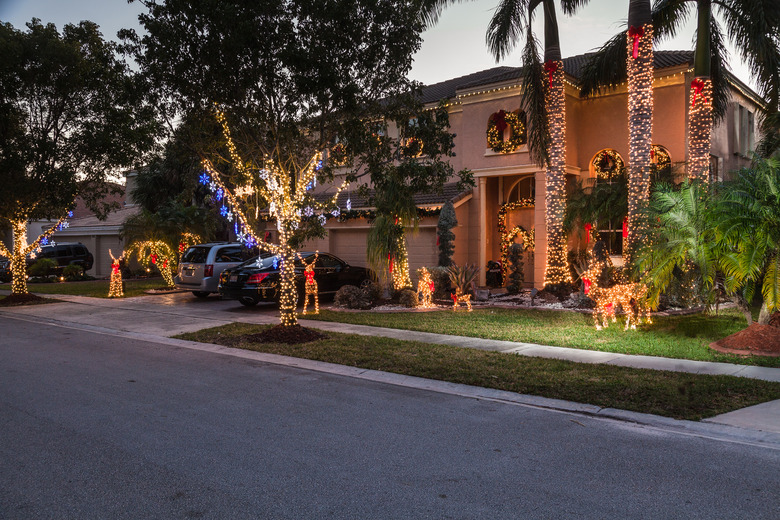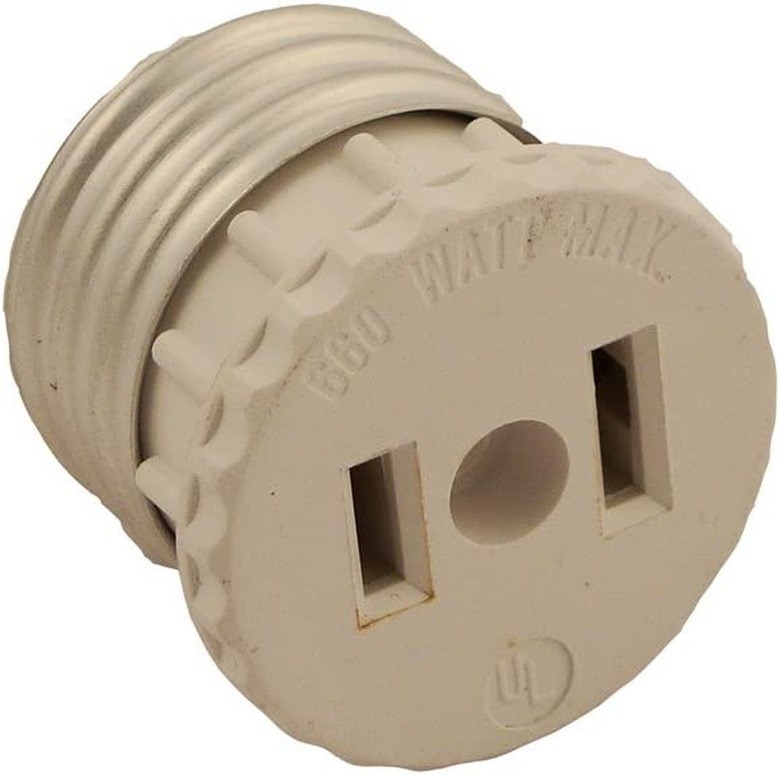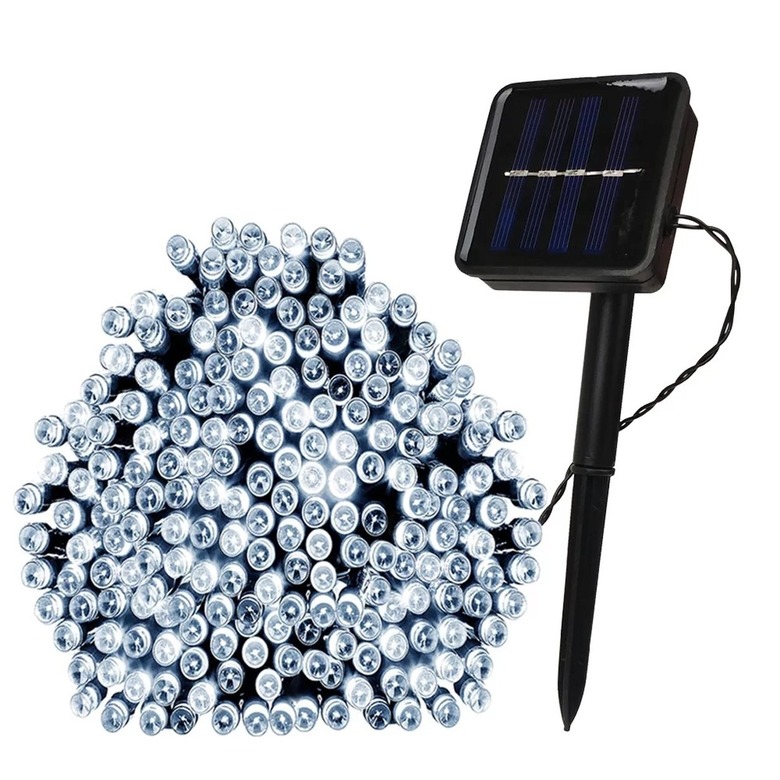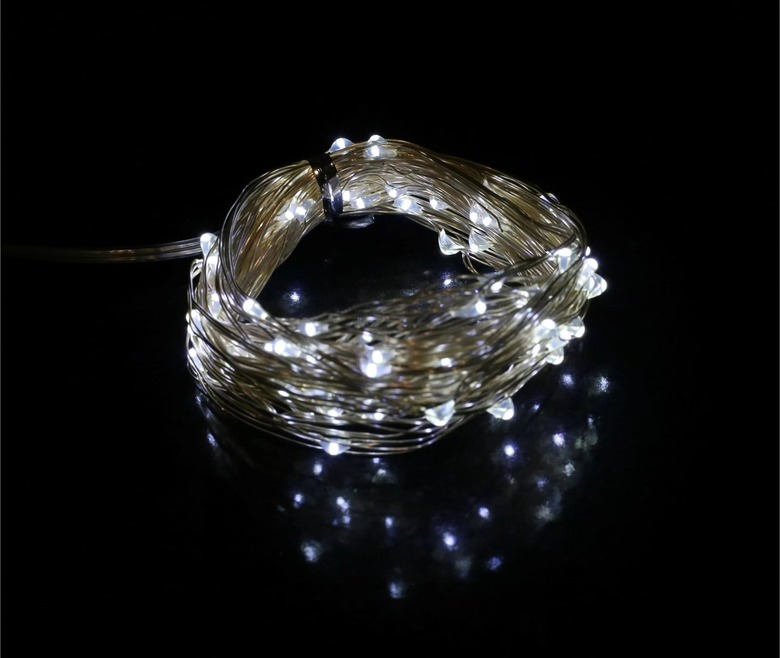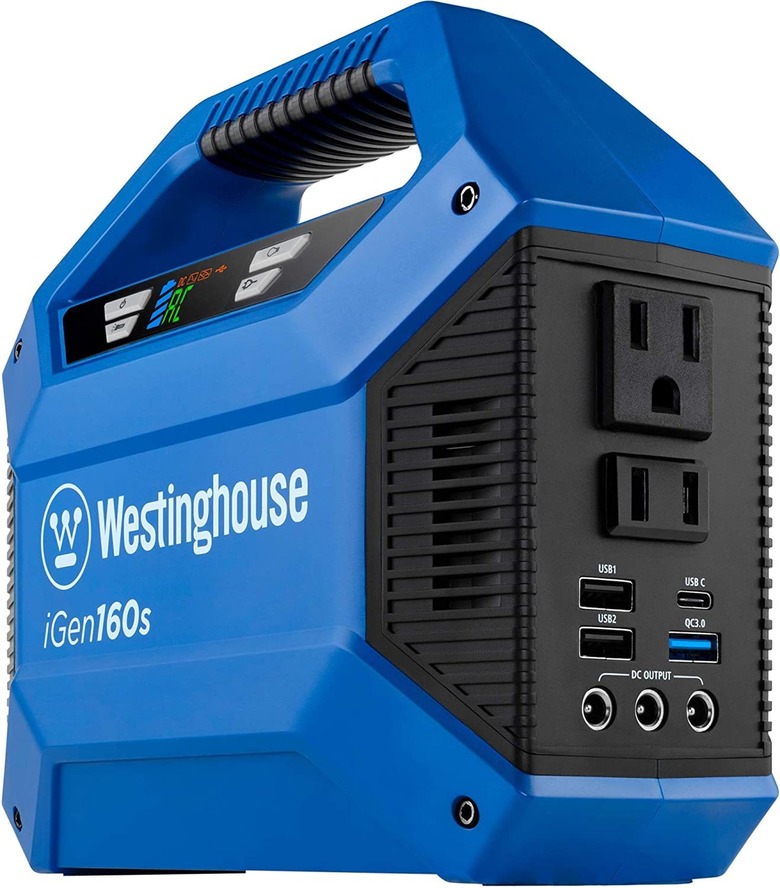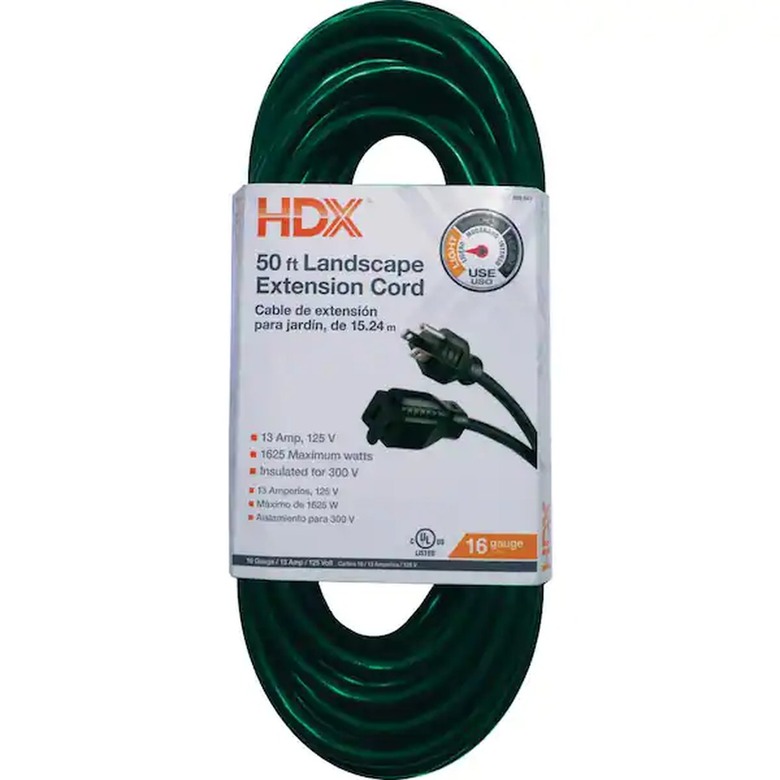Don't Have An Outdoor Outlet For Christmas Lights? Here Are 5 Products That Can Help
We may receive a commission on purchases made from links.
So you'd love to hang some Christmas lights out front, but your house or apartment balcony has no outdoor outlets — and you'd rather not run an extension cord through your bedroom window (good thinking). But this is 2022 — surely there must be a way to get power to some string lights without an outlet. Christmas miracles aside, there are plenty of ways to do this, and the solution probably won't cost much or require an electrician. It might not even require utility electricity.
Here are five easy ways to get power to your holiday lights without an outdoor outlet.
1. A Light Socket Adapter
1. A Light Socket Adapter
This is the simplest, cheapest, and overall best solution for powering Christmas lights without an outlet. All you need is an outdoor light fixture — it can be a porch light, a flood light, a yard lamp post, or any other kind of fixture that takes a standard screw-in light bulb. The trick is to replace the bulb with a simple electrical device called a light socket adapter. This is a little plug that threads into the light socket and has slots for plugging in string lights. The best part is that you can turn the lights on and off from your indoor light switch.
Our pick: Leviton 15-Amp, 660-Watt Socket to Outlet Adapter, $2.95
2. Solar-Powered String Lights
2. Solar-Powered String Lights
Solar-powered string lights work just like solar landscape lights. Each set includes a small solar panel that you can stick into the ground or mount anywhere on the house. The panel charges internal batteries during the day, and the batteries power the lights at night.
The lights are small but bright, and they come in a range of colors. However, if you're looking for classic tapered-bulb Christmas lights, you won't find them among the solar options. Also, the running time on the lights will vary by product and how much sun the panel is exposed to during the day. The lights won't likely stay on throughout a long winter's night.
Our pick: 660" Solar LED String Lights, $32.99
3. Battery-Powered Lights
3. Battery-Powered Lights
LEDs have changed the game when it comes to battery-powered string lights. In the old days, a short string of incandescent Christmas lights would burn through its batteries in a few hours, but today's LED lights use as little as 1 watt for 100 lights (about 35 feet of string) and can last 100 hours with two fresh AA batteries.
These lights aren't large or bright enough for your roofline or a large outdoor tree, but they work great for trimming around window, door, or porch railing, or for lighting up a potted tree at an entry. Make sure to get an outdoor-rated set, and stash the battery pack in a convenient location for changing the batteries and turning the lights on and off (if there's no remote control).
Our pick: 420" String Lights, $26.99
4. A Portable Outlet
4. A Portable Outlet
If you have your heart set on traditional Christmas lights but there are no power options in sight, a small portable power station gives you a battery-powered outlet anywhere you need it. A power station is a versatile battery unit that you charge by plugging it into a wall outlet, and some can be charged in a car or with a solar panel. A small station charges in about six hours. Once it's charged, bring the station outdoors and plug the lights into it (you can also use an extension cord, if desired).
The key here is to use energy-efficient string lights. A 100-foot string of good-quality LED lights with C9 bulbs (the big, classic ones) can use as little as 15 watts of electricity. A portable power station rated for 155 watt-hours (Wh) can run that string for over 10 hours on a full charge.
Our pick: Westinghouse iGen160s Portable Power Station and Solar Generator, $105.83
5. An Extension Cord
5. An Extension Cord
You may have ruled out this option because you don't want to envision miles of messy cords snaking everywhere, but in many cases, this setup has its advantages. It's just like plugging into an outlet, so you can use any — and as many — lights as you like, and you won't run out of power. If you plug the cord or the lights into a timer, you'll never have to make late-night trips into a cold garage or out back to turn the lights on and off.
An extension cord works best if you can use a garage or outdoor outlet. If you use a garage outlet, get a long extension cord and run it along the garage walls — so it's out of the way — and out along one side edge of the garage door. Most garage doors have gaps and a rubber gasket at the bottom, so it's fine to close the door on top of the cord.
Our pick: HDX 50 ft. 16/3 Indoor/Outdoor Landscape Extension Cord, Green, $18.98
Warning
Never leave a window cracked open to run out an extension cord. This is an invitation to burglars, not to mention what it can do to your winter heating bill. Basement windows are particularly vulnerable because they're usually hidden from the street.
